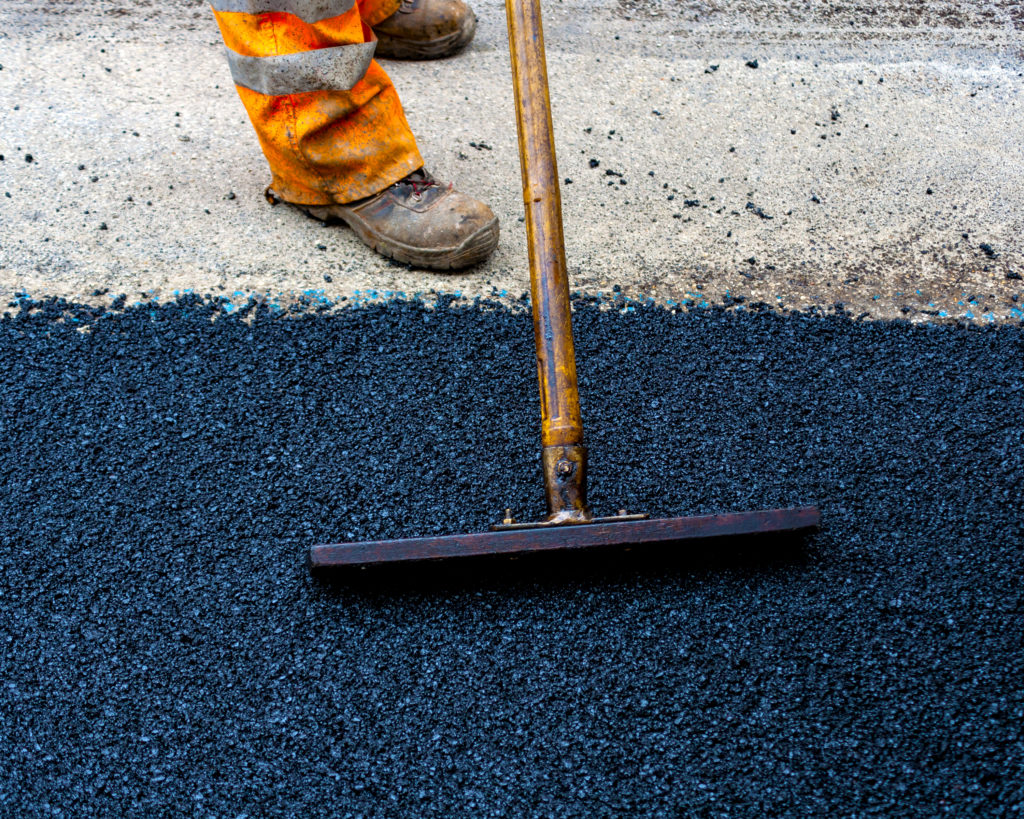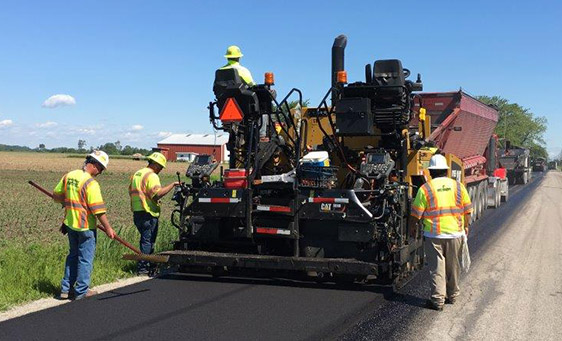Hot Mix Asphalt Paving: Your Entrance to Costs Angled Parking Solutions
Hot Mix Asphalt Paving: Your Entrance to Costs Angled Parking Solutions
Blog Article
Unlocking the Secrets of Hot Mix Asphalt Modern Technology
Discovering the depths of hot mix asphalt innovation discovers a world where accurate solutions and careful processes assemble to shape our roads and facilities. The blend of binders, fillers, and aggregates isn't just a construction job but a tactical orchestration of toughness and effectiveness. As we peer into the elaborate dancing of elements, a tapestry of durability and sustainability unravels. However what lies below this surface of asphaltic mastery, and what tricks wait to be introduced in the world of paving innovations?
Importance of Warm Mix Asphalt
Hot Mix Asphalt plays a crucial role in contemporary infrastructure development as a result of its sturdiness and cost-effectiveness. As the most frequently made use of leading product for roads, highways, and parking lots, Hot Mix Asphalt supplies a variety of advantages that add to its value in building and construction tasks. One vital advantage is its ability to hold up against rush hour tons and harsh climate condition, supplying a lasting and reputable surface area for transportation networks. Furthermore, Hot Mix Asphalt is economical in both initial building and construction and lasting upkeep, making it a favored option for lots of framework tasks.
The durability of Warm Mix Asphalt stems from its composition, which includes accumulations, binder, and filler materials that are carefully chosen and mixed to satisfy particular efficiency requirements. Generally, the importance of Warm Mix Asphalt in framework development can not be downplayed, as it continues to be a keystone of modern-day building and construction techniques.
Elements of Asphalt Mixes
The composition of asphalt mixes contains very carefully picked aggregates, binder, and filler materials that are important for attaining particular performance requirements. Accumulations are the key element of asphalt mixes, offering strength and stability. These aggregates can be all-natural, such as crushed rock or crushed rock, or synthetic, like recycled products from old pavements. The binder, commonly bitumen or asphalt concrete, holds the aggregates with each other and supplies flexibility and toughness to the mix. The option of the binder is vital as it directly affects the mix's performance in different climate problems. Fillers, such as moisturized lime or Rose city concrete, are used to improve the mix's workability and aging resistance. Angled Parking.
The combination and proportion of these parts play a considerable role in identifying the top quality and performance of the asphalt mix. Engineers carefully design the mix to fulfill details demands, taking into consideration variables like traffic quantity, climate problems, and pavement life-span. Proper option and harmonizing of aggregates, binder, and fillers are vital for creating resilient, long-lasting asphalt sidewalks.
Combining and Production Methods
:max_bytes(150000):strip_icc()/asphalt-worker-134249388-58cdf96f5f9b581d723f2f33.jpg)
When the accumulations are selected, the binder, frequently asphalt cement, is contributed to bind the materials together. The binder's high quality and quantity dramatically influence the mix's strength, flexibility, and resistance to ecological elements. Furthermore, fillers like hydrated lime or Rose city concrete might be incorporated to enhance specific qualities of the asphalt mix, such as its workability or moisture resistance.
Throughout manufacturing, the accumulations and binder are heated up, typically in between 250-325 ° F(121-163 ° C ), to promote blending and guarantee proper finishing of the aggregates. The blending procedure has to be thorough to achieve a homogeneous mix that advertises the wanted performance characteristics of the asphalt. Various strategies, such as set mixing or drum mixing, are utilized to achieve premium and consistent asphalt mixes for building and construction jobs.
Elements Influencing Asphalt Performance
Factors affecting asphalt efficiency encompass a variety of variables that influence the resilience, durability, and total high quality of asphalt sidewalks. One vital element is the high quality of products used in the asphalt mix.

Layout considerations, such as pavement thickness and drain, are crucial in ensuring the long-term performance of the asphalt pavement. By very carefully taking into consideration these service providers, designers and aspects can maximize asphalt efficiency and improve the solution life of pavements.
Sustainable Practices in Asphalt Technology

Additionally, the development of warm-mix asphalt (WMA) technologies has actually obtained grip over the last few years. WMA allows for the production and positioning of asphalt blends at lower temperatures contrasted to standard hot-mix asphalt, leading to reduced power intake and greenhouse gas discharges. Additionally, using permeable asphalt blends can help mitigate stormwater drainage problems by allowing water to penetrate via the sidewalk and into the ground, advertising natural water filtration and reenergize processes. By implementing these lasting practices, the asphalt market can add to constructing a more eco friendly and resistant infrastructure network.
Verdict
Finally, warm mix asphalt modern technology plays a crucial function in contemporary facilities growth as a result of its resilience and cost-effectiveness. By very carefully stabilizing components, employing appropriate mixing methods, and thinking about different aspects, designers can produce top notch asphalt blends that hold up against rush hour lots and rough climate problems. Welcoming lasting methods, such as utilizing recycled materials and warm-mix innovations, further enhances the ecological kindness of asphalt innovation.
Mixing and production strategies in warm mix asphalt innovation include get more the accurate combination and handling of accumulations, binder, and fillers to produce a high-performance and durable asphalt mix.Factors affecting asphalt performance encompass an Read More Here array of variables that influence the sturdiness, durability, and overall top quality of asphalt pavements. Sustainable techniques in asphalt innovation encompass numerous efforts aimed at lowering the environmental impact of asphalt manufacturing and paving processes. By including recovered asphalt pavement (RAP) and recycled asphalt roof shingles (RAS) into brand-new asphalt mixes, the sector can considerably reduce the usage of raw materials and power, while also reducing land fill waste.
WMA permits for the manufacturing and placement of asphalt mixes at reduced temperatures contrasted to traditional hot-mix asphalt, resulting in lowered energy usage and greenhouse gas emissions.
Report this page